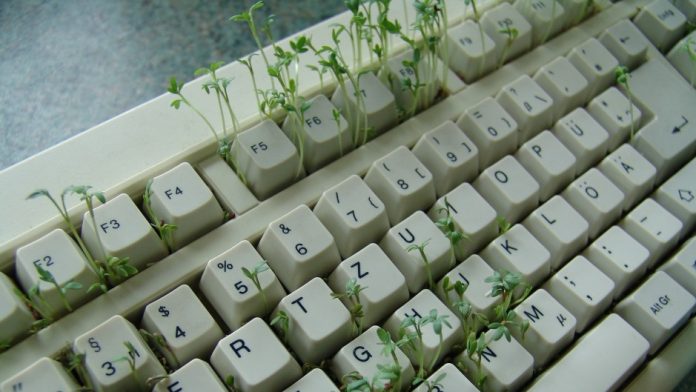An international team of researchers led by Prof. Dan Nicolau, Chair of the Department of Bioengineering at McGill University, has created a biological computer that uses about ten thousand times less energy than the most advanced electronic computers.
Instead of electricity, this biocomputer uses the same chemical energy source as living cells, adenosine triphosphate (ATP). ATP then drives the movement of molecular motors like actin and myosin, the proteins responsible for the contraction of your muscles.
Channelling your inner mathematician
The computer works by physically encoding a mathematical problem or task into the geometric configuration of microchannels on a surface; mathematical operations are encoded into the pattern of junctions while exits correspond to possible solutions.
The channels are coated with a motor protein such as myosin. Then, like pulling yourself along a rope, an actin filament binds to a myosin molecule that propels it forward, where it can bind to the next myosin. In this way, the actin filaments travel along the channels. By using a whole swarm of actin filaments, the entire network of channels can simultaneously be explored, computing all possible solutions in parallel.
Kinesin “walking along” a microtubule. Kinesin was another molecular motor used to drive the movement of microtubules through the microchannels of the biocomputer.
The article, published in the Proceedings of the National Academy of Sciences (PNAS) describes how traditional, electronic computers perform operations sequentially. Solving problems in parallel drastically reduces the time required to arrive at a solution.
Fluorescent actin filaments explore the entire network of the mathematical problem, exploring all solutions in parallel. From Nicolau et al. “Parallel computation with molecular-motor-propelled agents in nanofabricated networks” PNAS (2016).
A-maze-ing
Of course, the biocomputer comes with some limitations. As the problems get harder, you need more filaments to solve them. Think of it like a maze with multiple exits. If you’re alone, it’ll take you a long time of bumbling about randomly to find every possible exit. On the other hand, if there were ten of you, it wouldn’t take as long. If there were millions of you, the odds of somebody getting to each exit quickly would be much better. The more exits there are, the more people you need to find them in a reasonable time.
Prof. Nicolau mentions the possibility of using organisms that can replicate, such as whole cells, to overcome this obstacle.
Do not enter
Another issue is errors. These occur when a filament goes in a direction it shouldn’t, resulting in an incorrect solution. The number of errors increases with the number of filaments, so the error rate becomes too high with more complex problems.
Clearly, the types of problems this biocomputer can tackle are still very limited, but the proof of concept shows that much less energy can be used for each computational task, reducing heat dissipation problems. This could lead to exciting advances like more compact electronics and even supercomputers available to the general public.








































